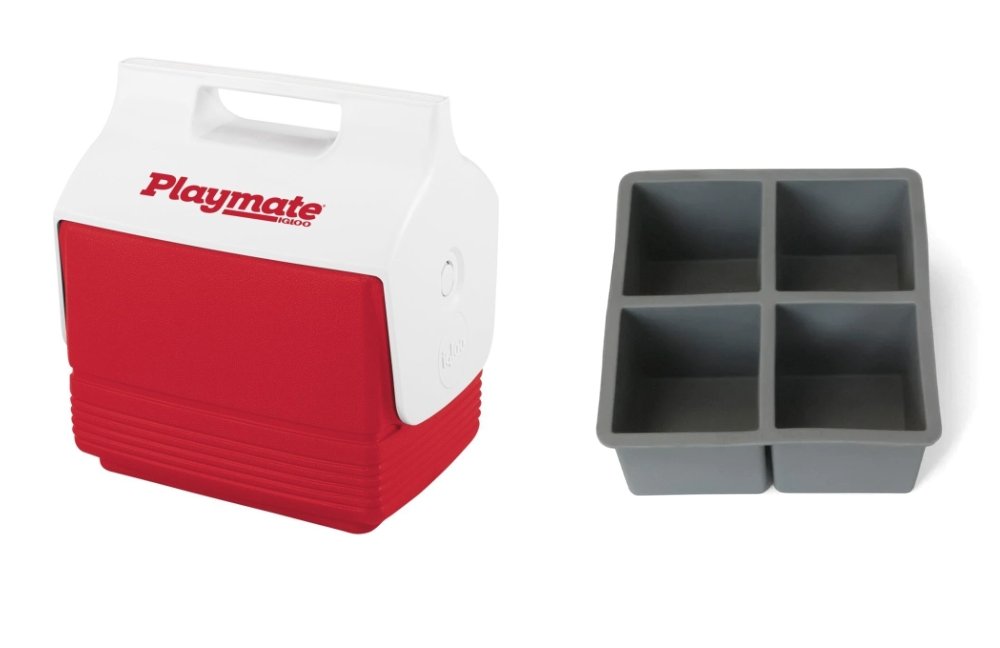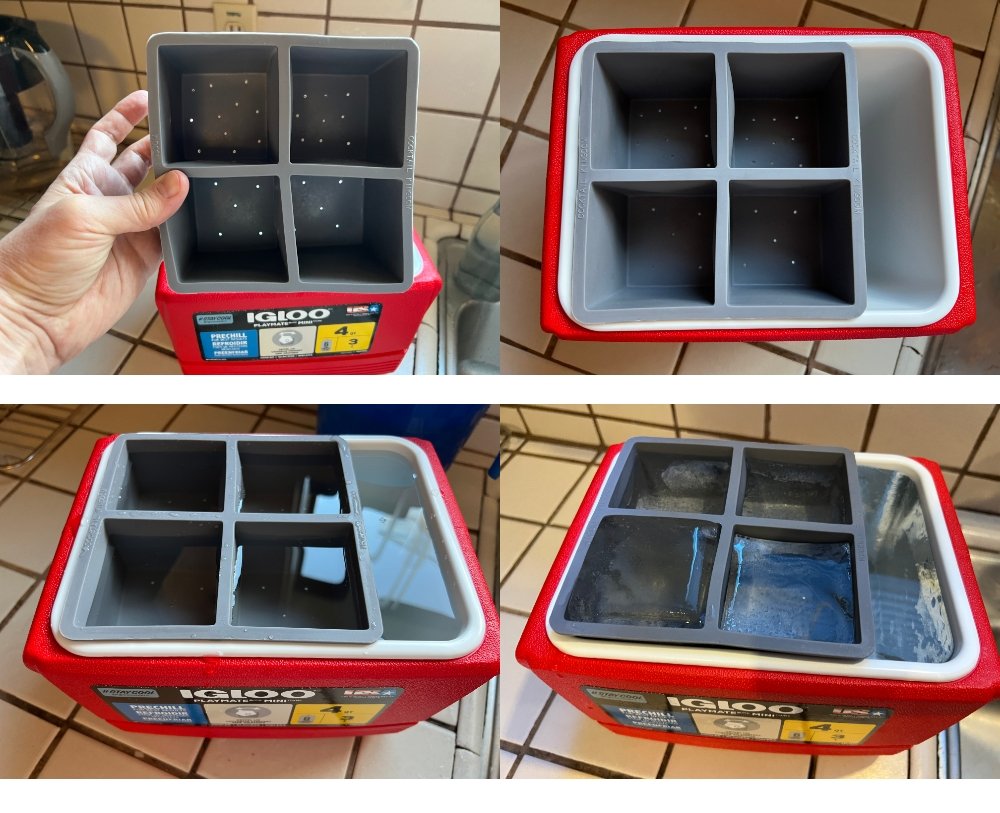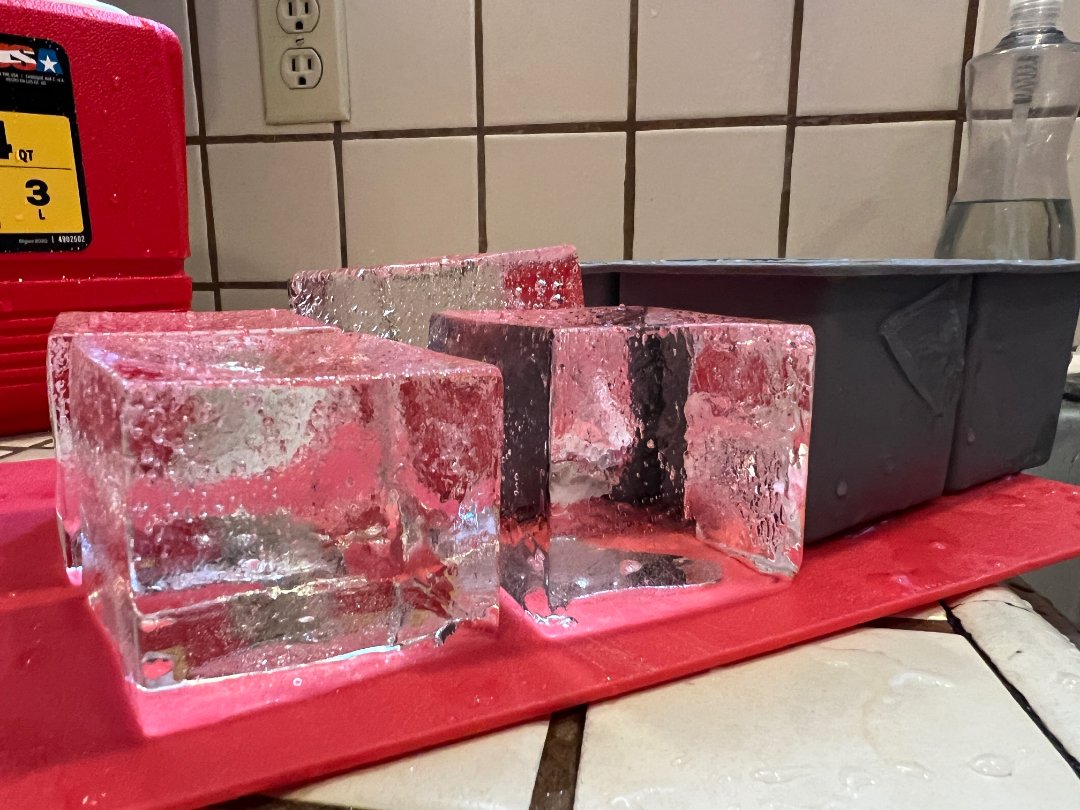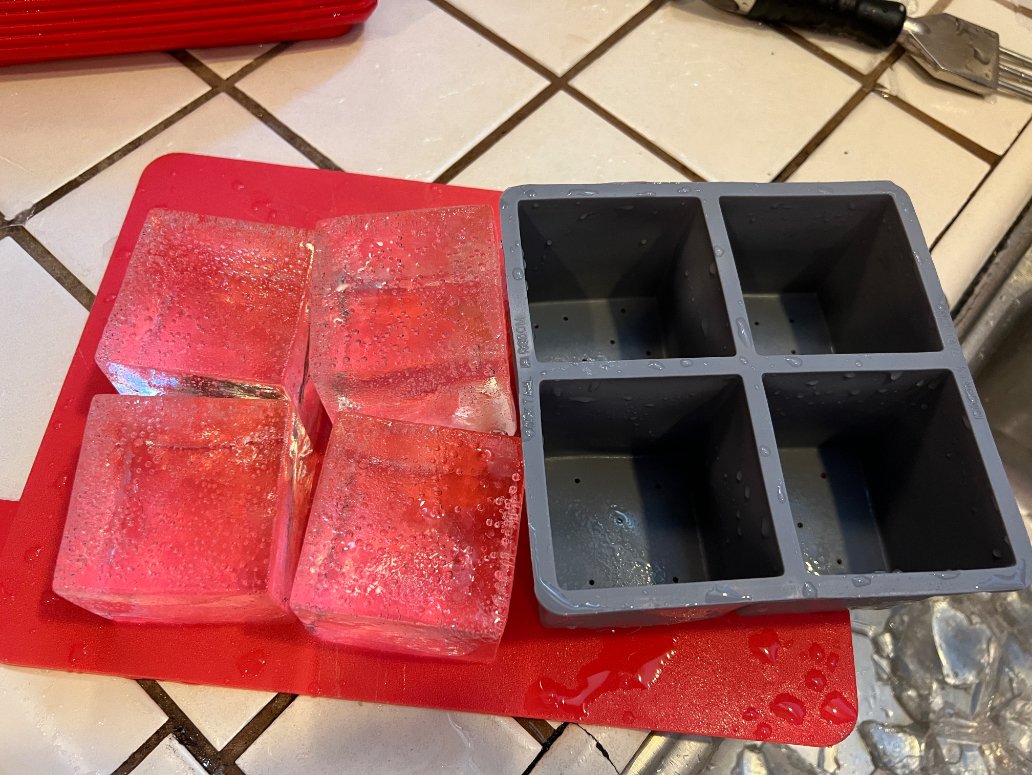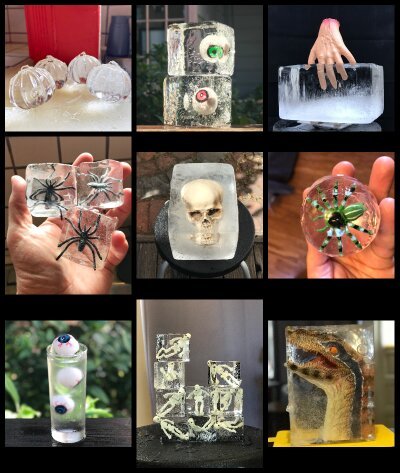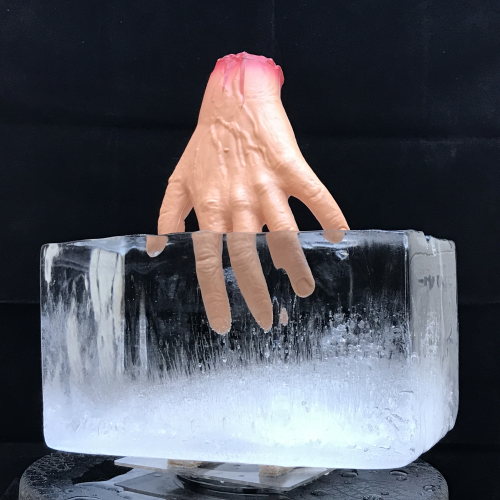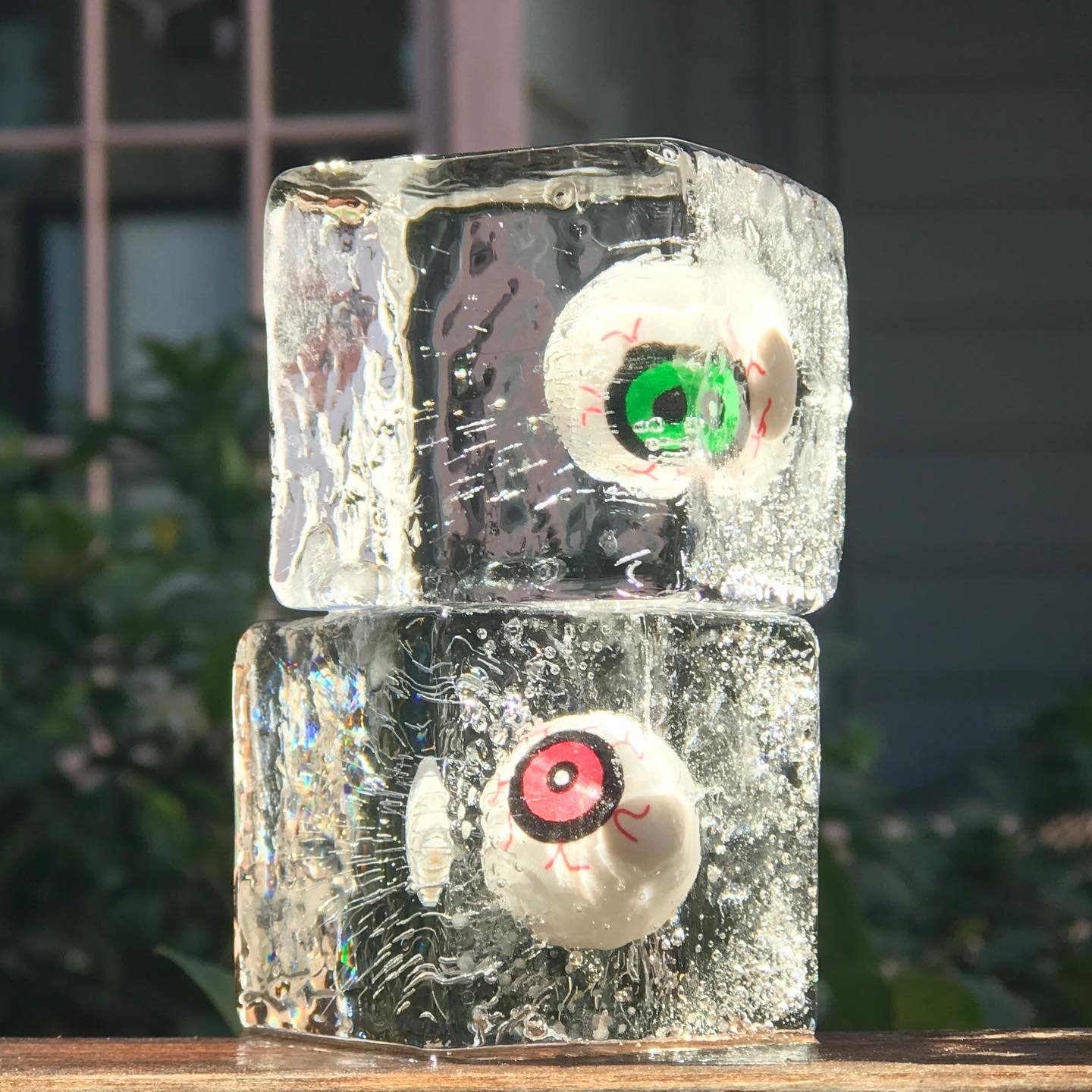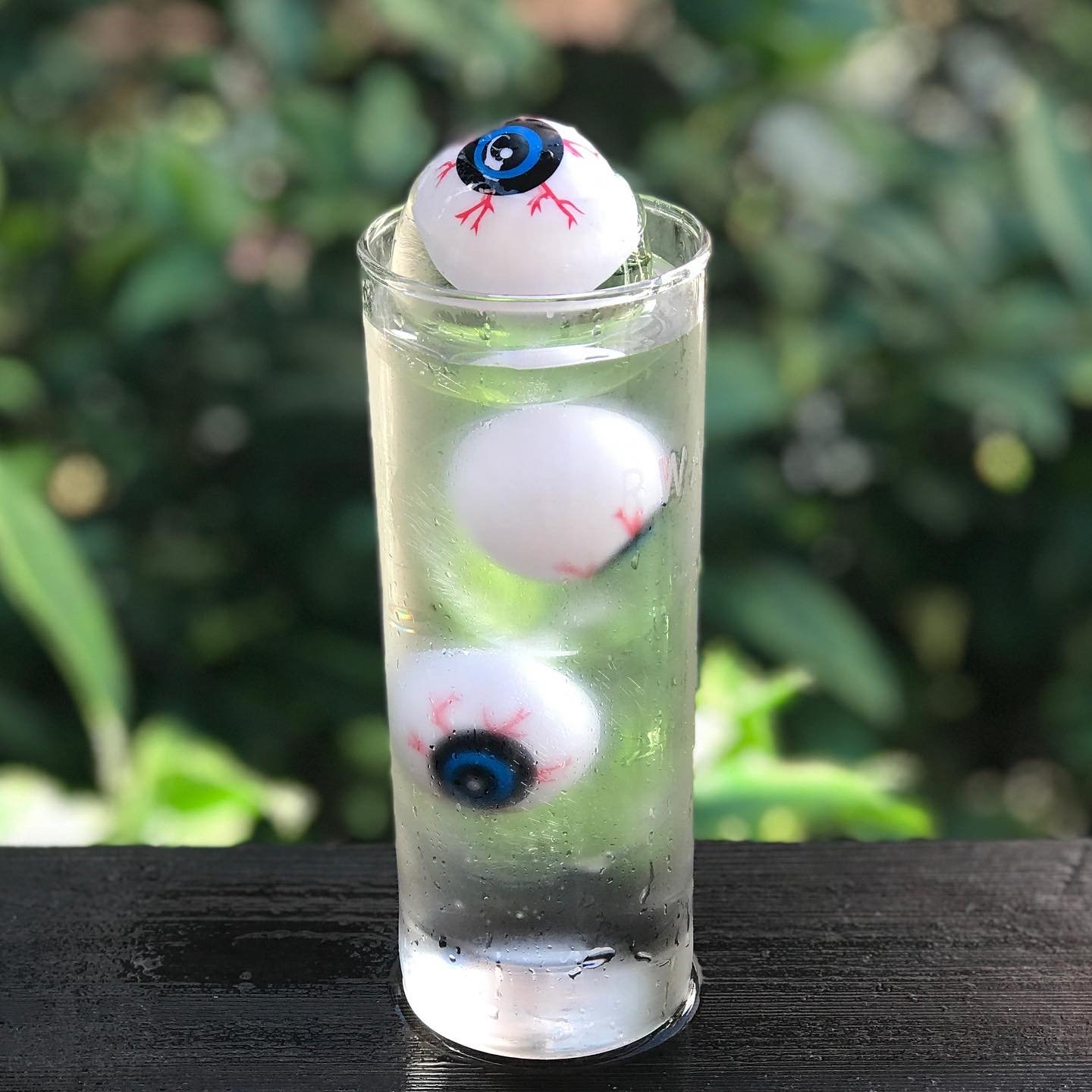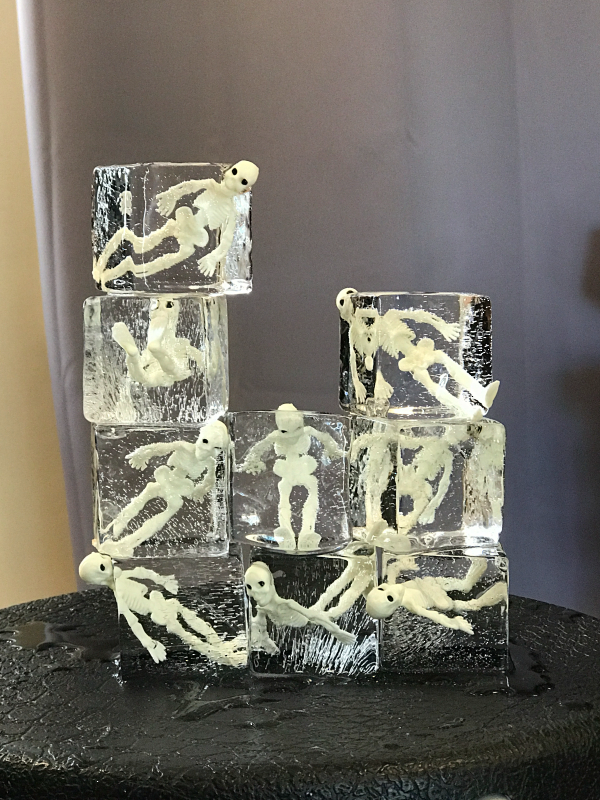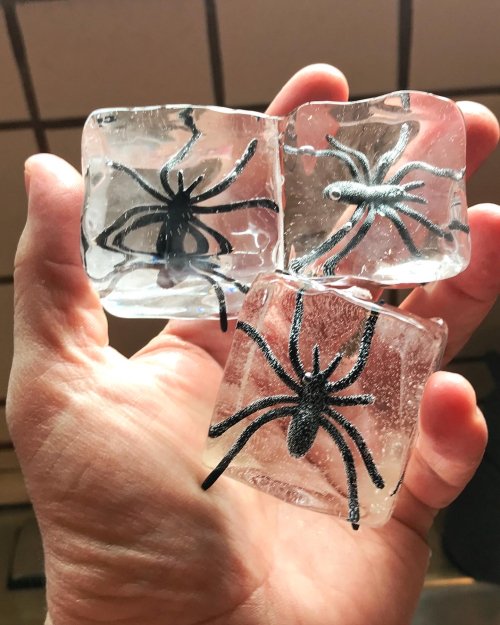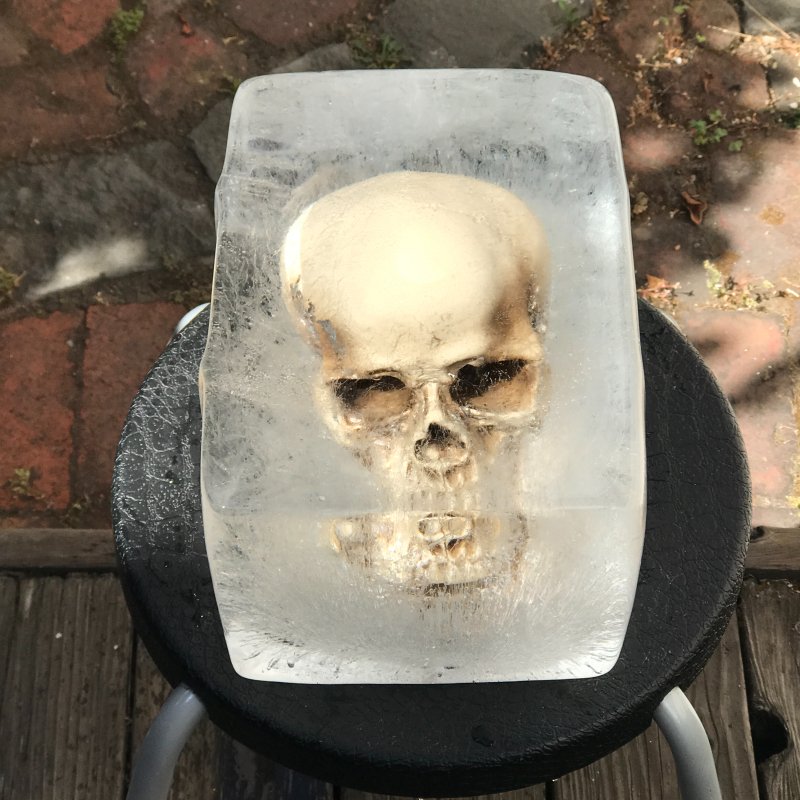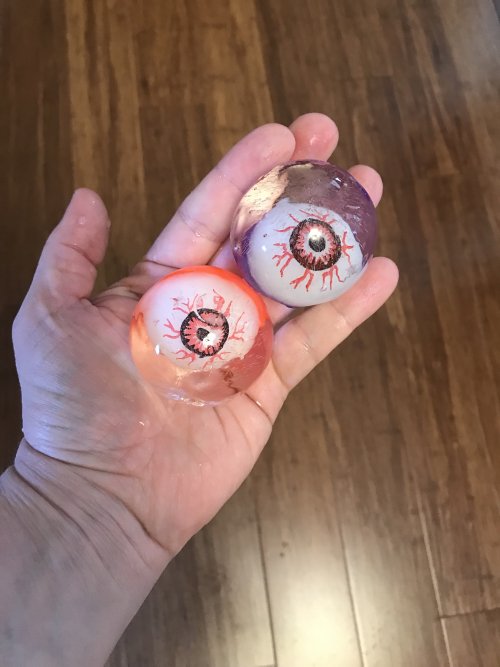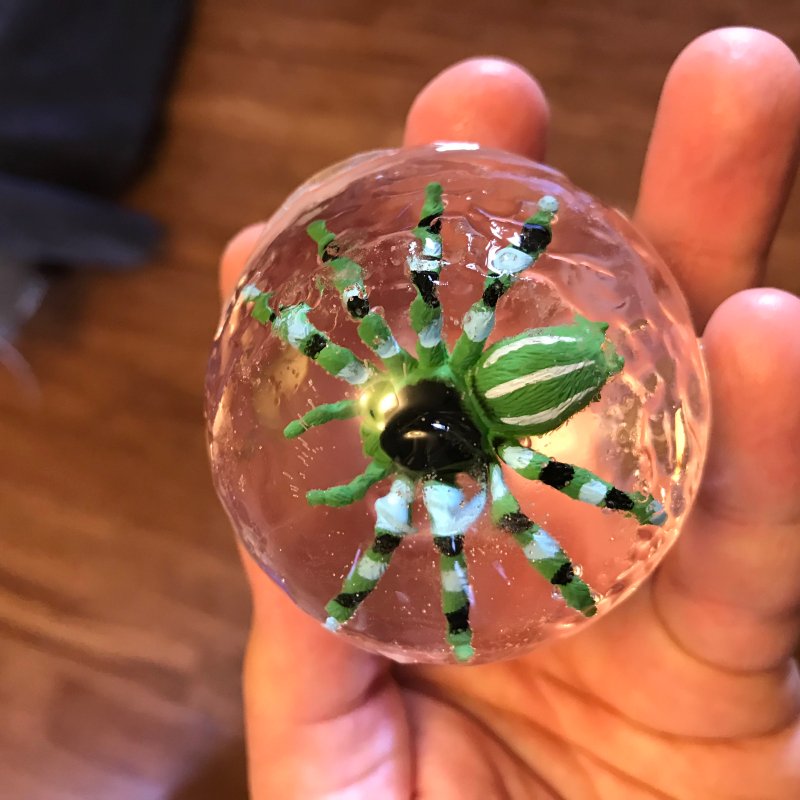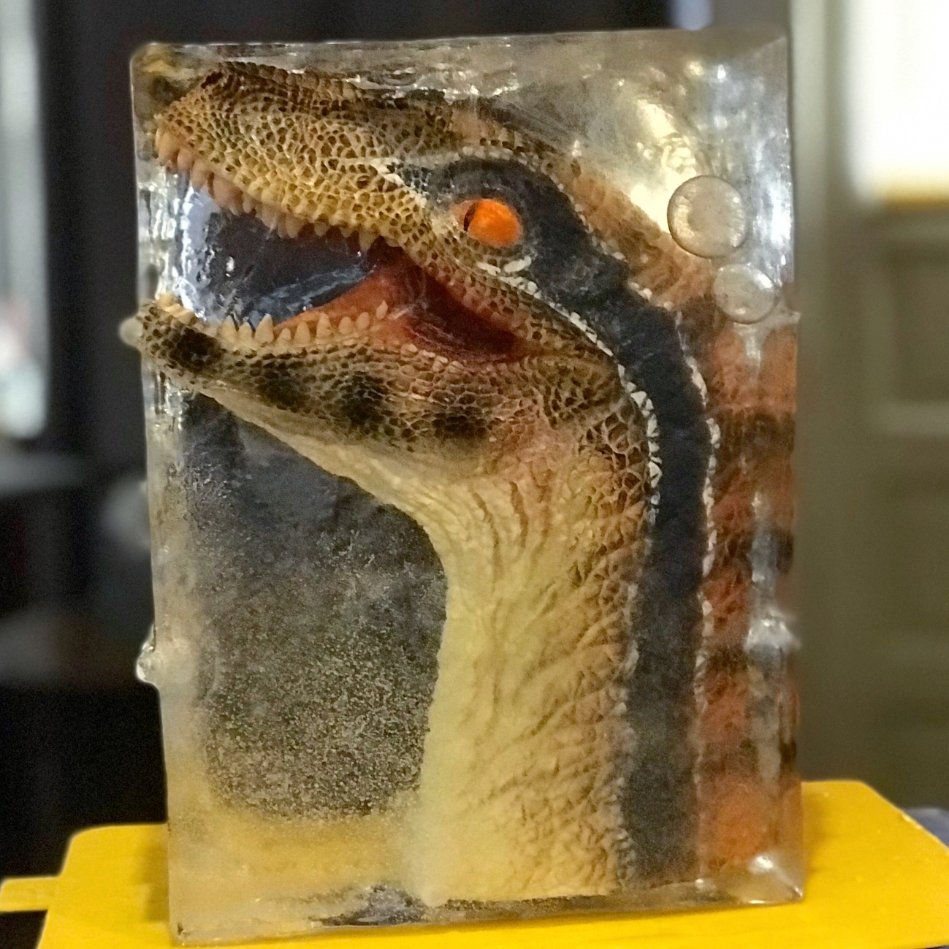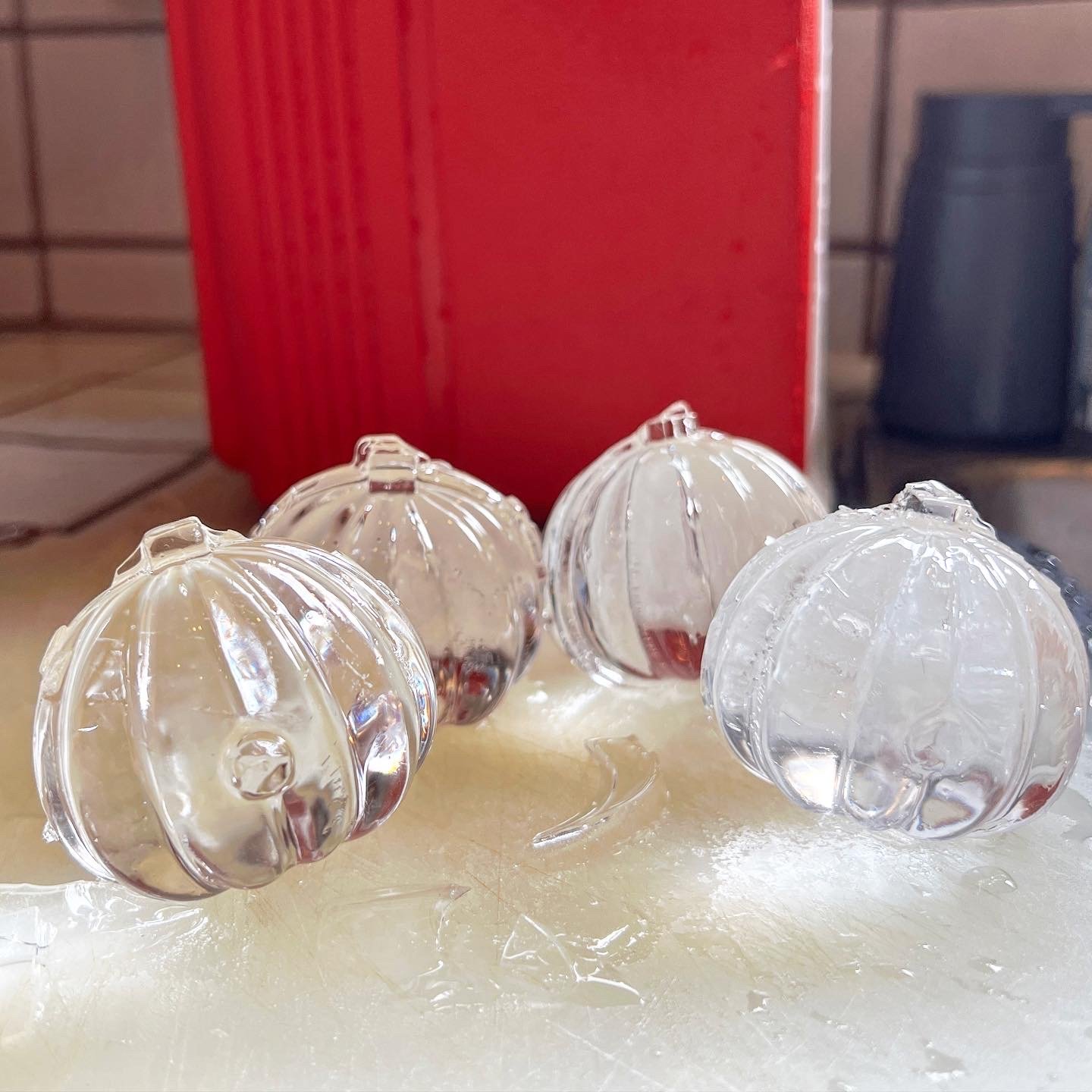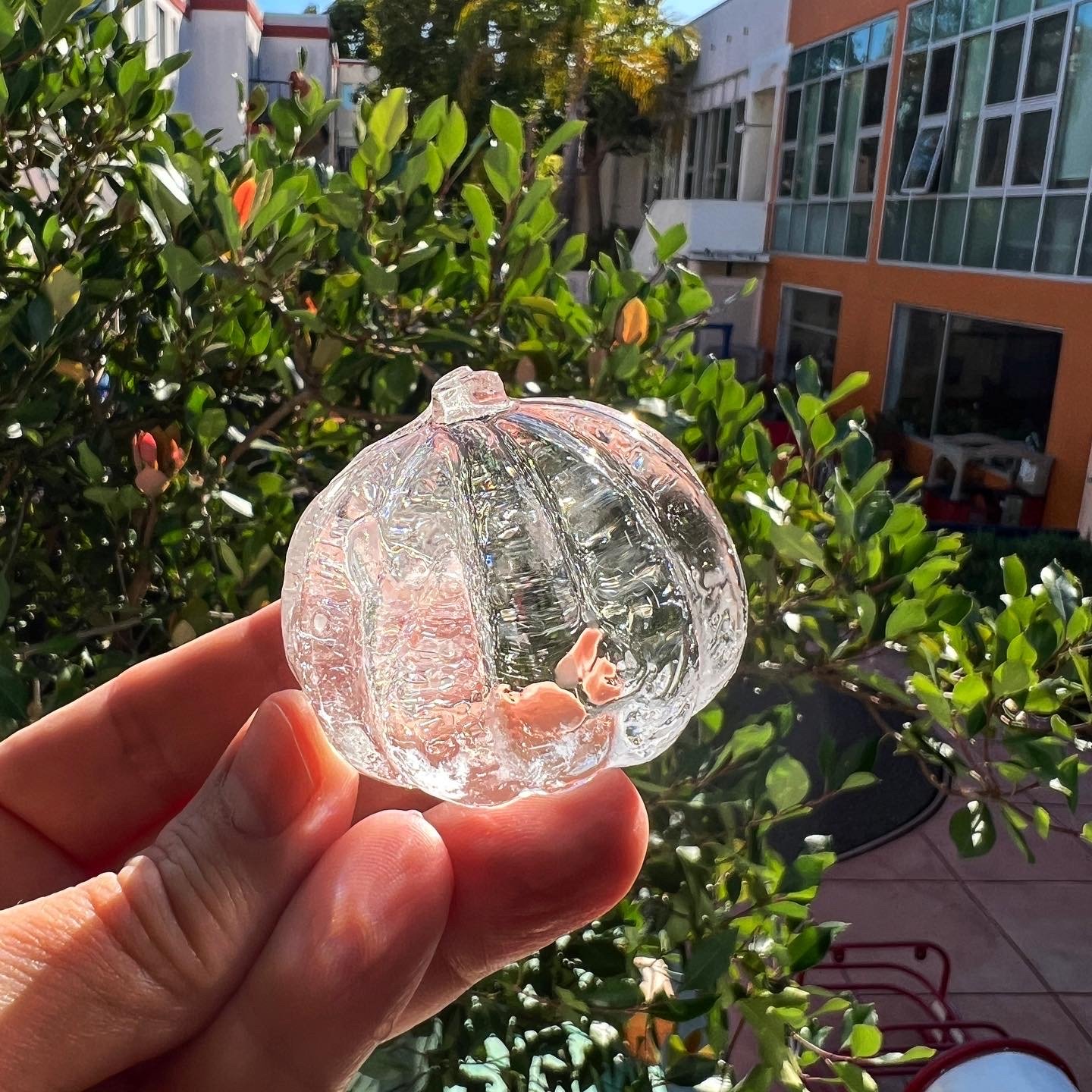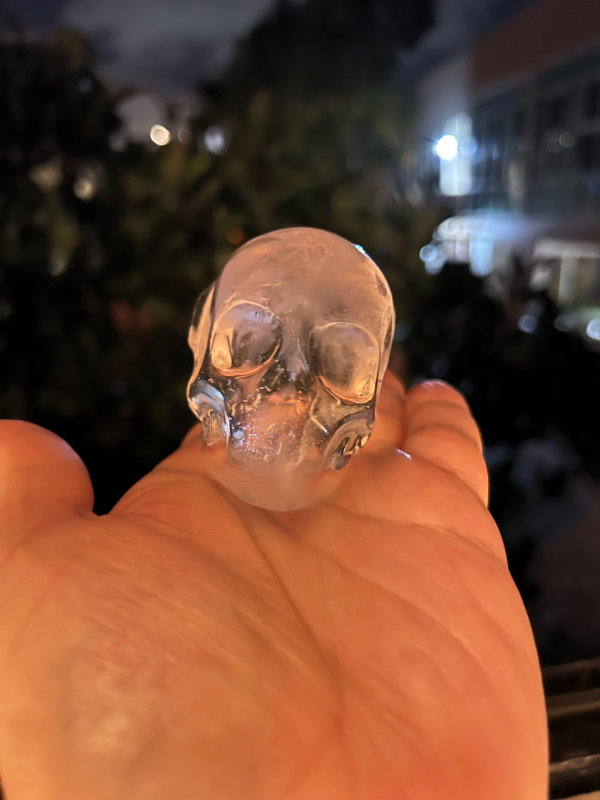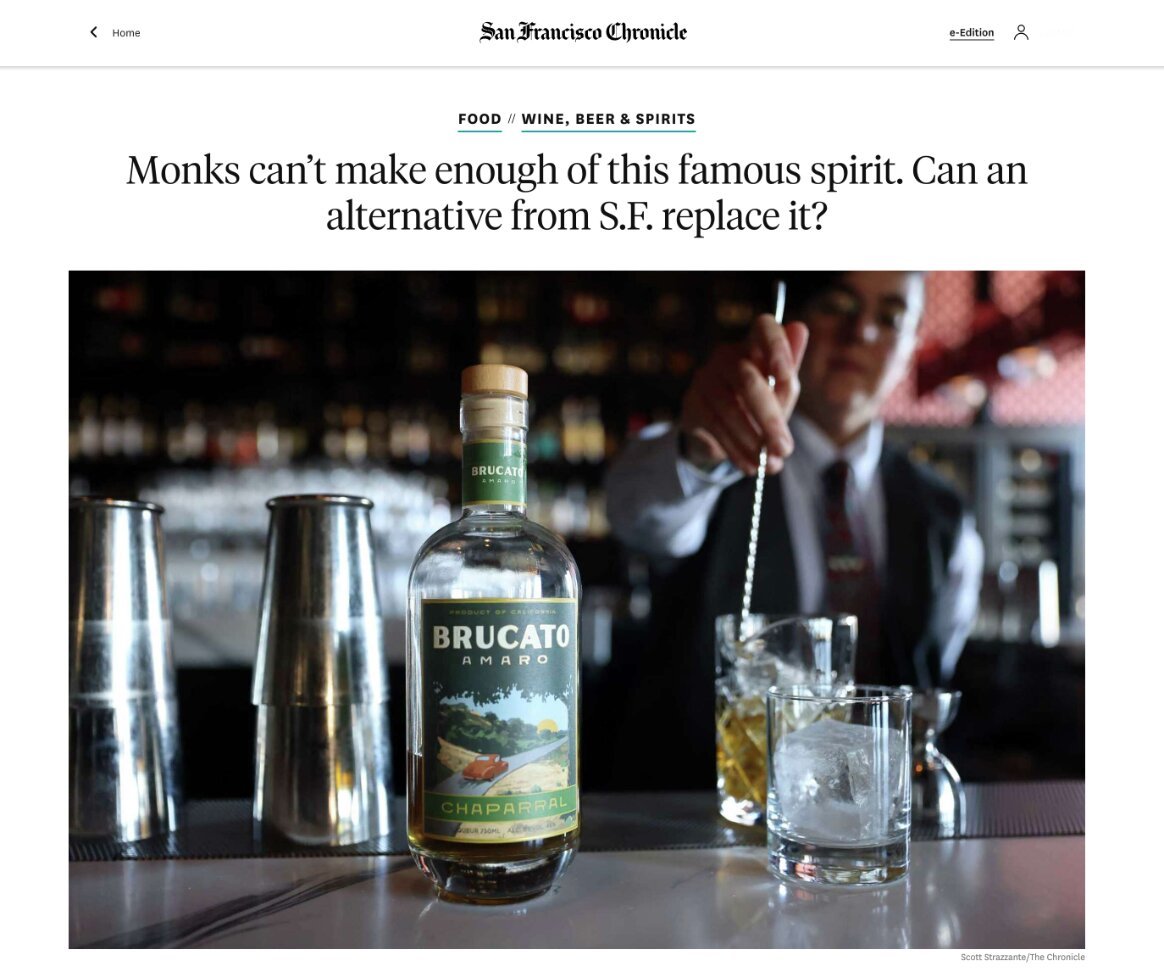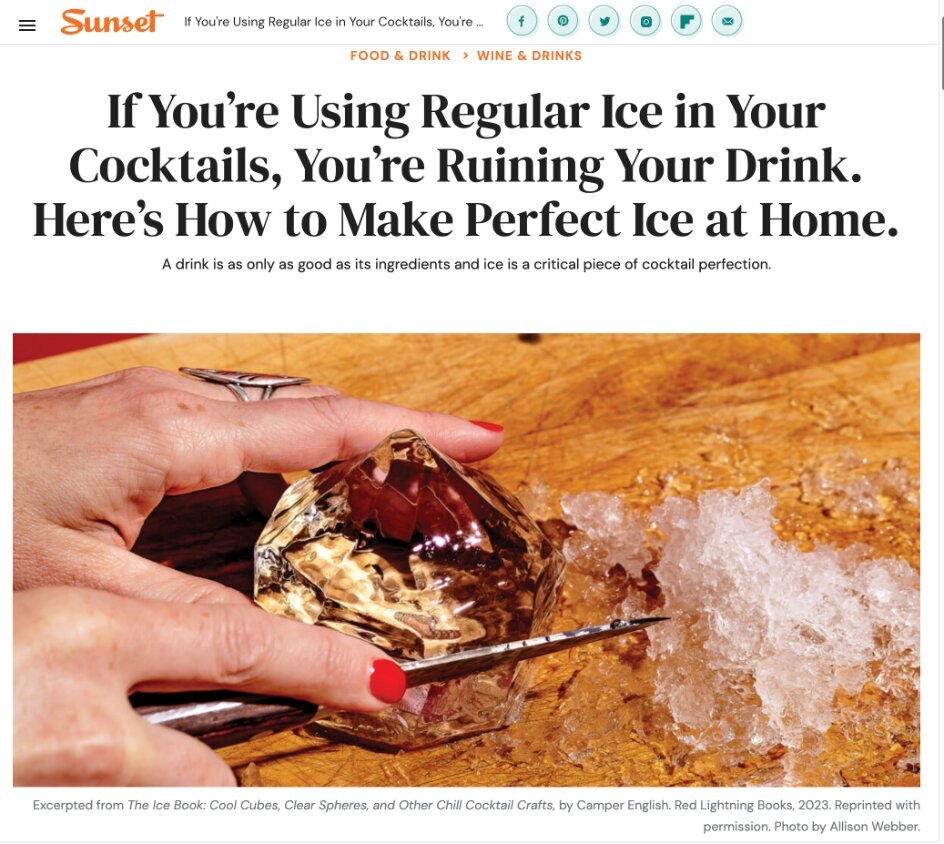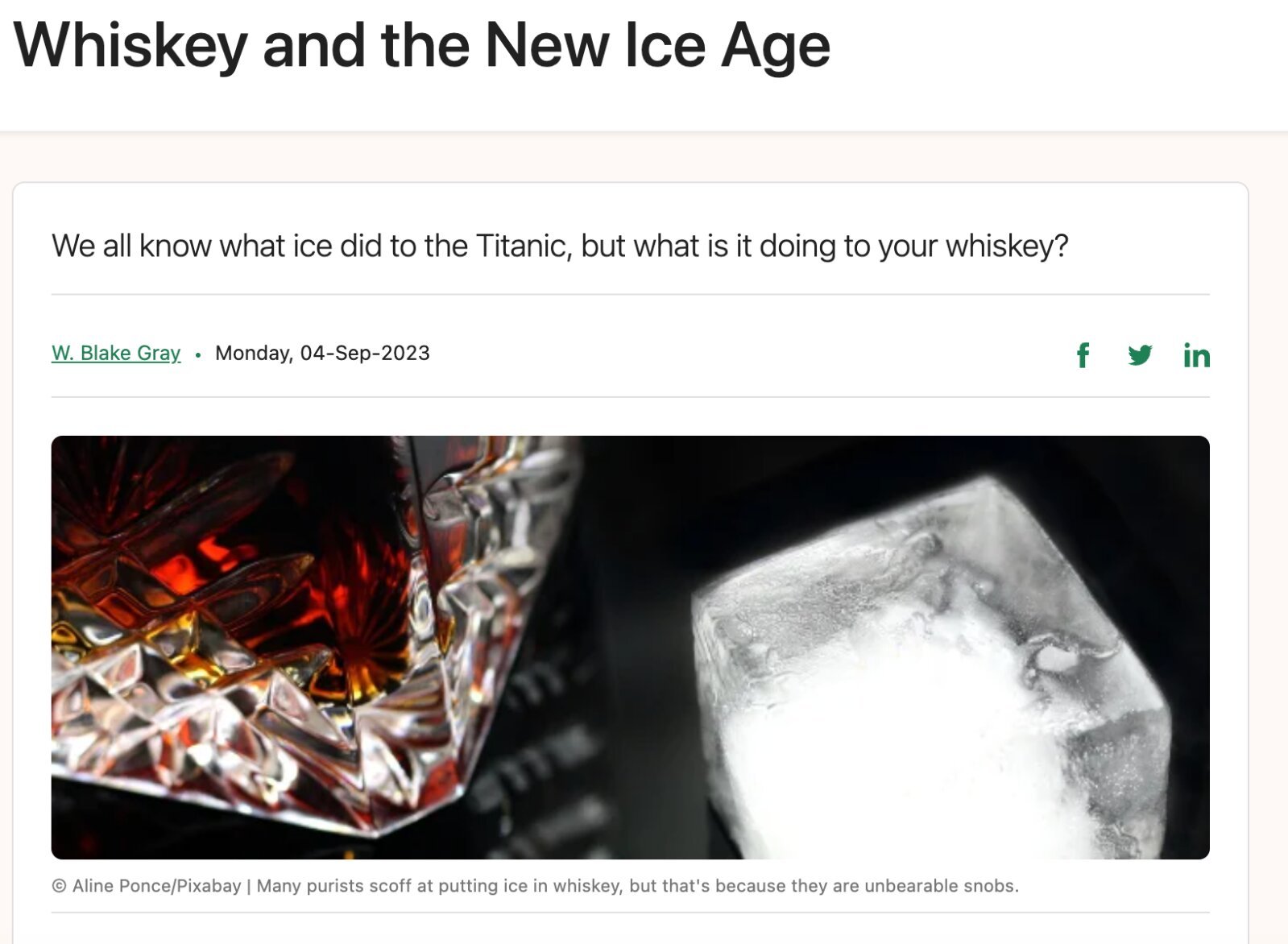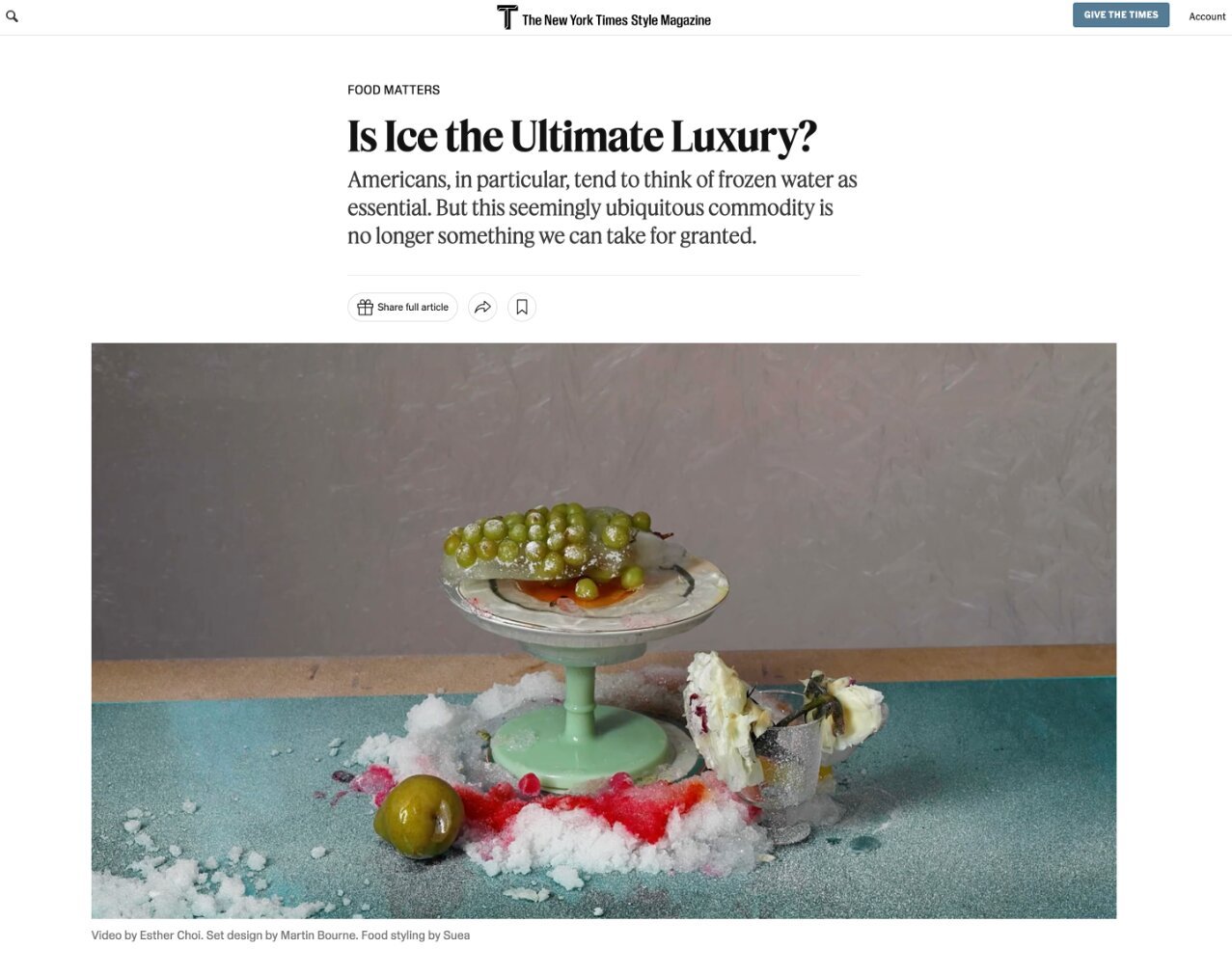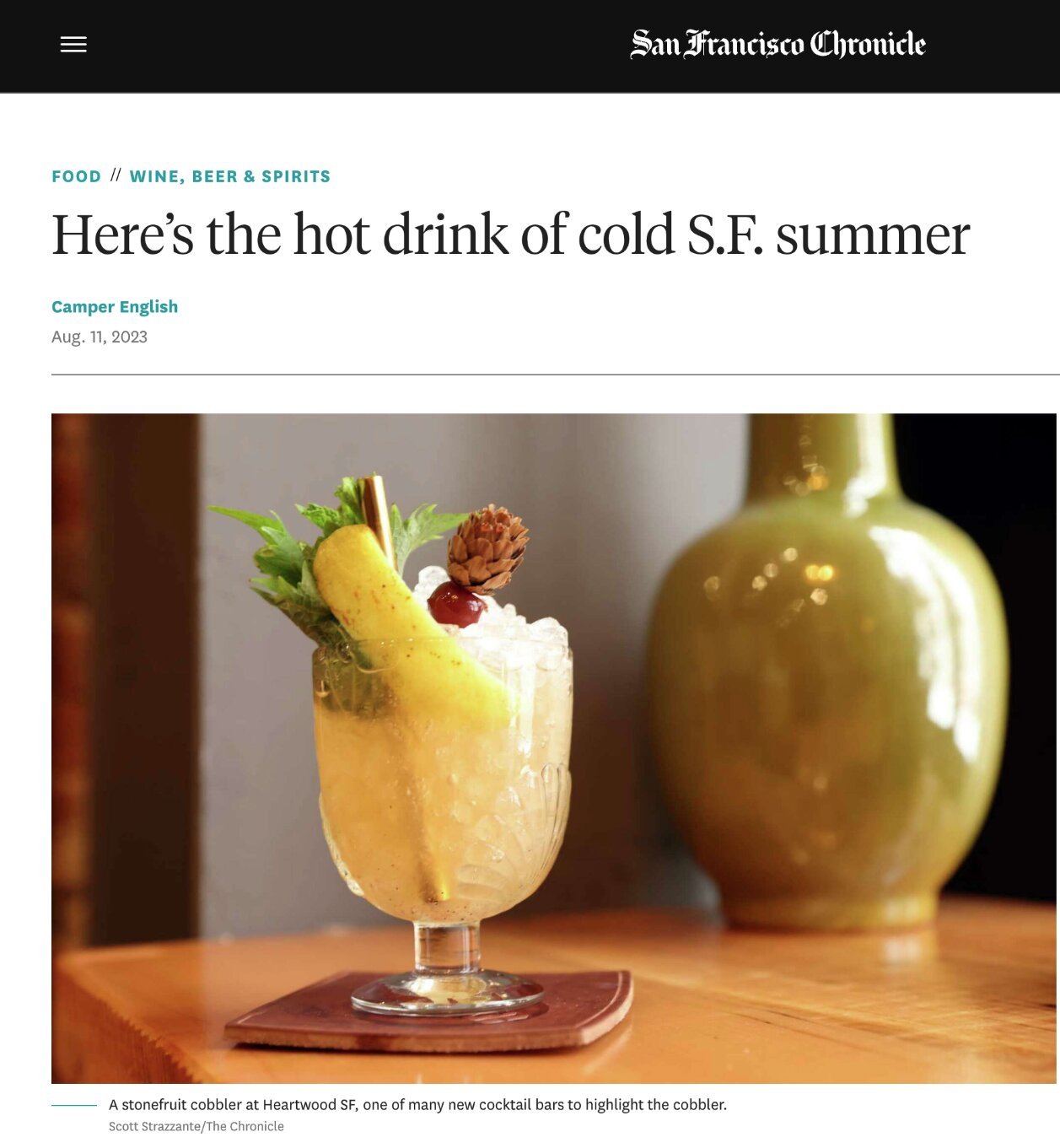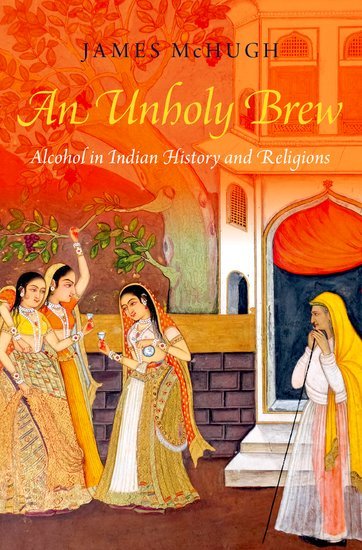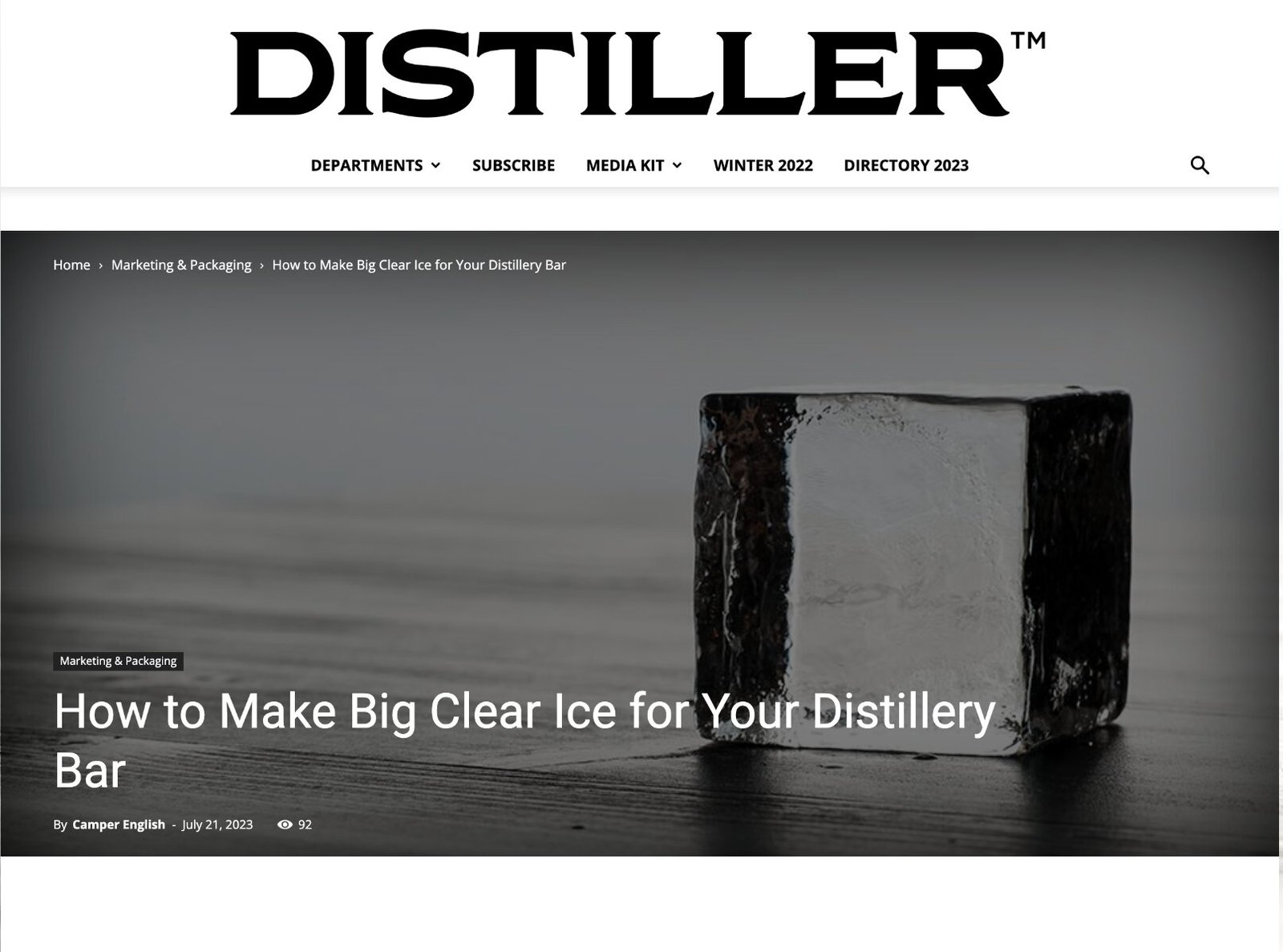I found a cooler and ice cube tray combination that makes clear 2.5 inch cubes. The tray fits into the cooler at the top perfectly – you don't need to make any special effort to hang it nor do you need a riser to sit it on.
This extra-large size cube fits the Cocktail Kingdom 55mm ice ball maker or you can just use it as a starter cube from which to cut diamonds.
The equipment for this is:
- The Igloo Mini Playmate Cooler, 4 quart, 6-Can Capacity
- Cocktail Kingdom 2.5 inch square ice cube tray
You might also want a drip irrigation hole punch to poke holes in the bottom of the ice cube tray. (A larger hole punch would work great too.)
(Note that I also tried purchasing a different 2.5 inch ice cube tray on Amazon but it's not actually 2.5 inches – closer to 2 inches. It's this one.)
Instructions:
- punch holes in the bottom of the ice cube tray
- remove the top handle from the Igloo cooler. To do so, you can't just pull off the top. You pop out the disc cover on each side, then there is a screw that you unscrew. This video demo shows this. (Note- apparently you don't need to completely remove the lid – I see in the pictures that you can just open it all the way with the lid still attached. but oh well I did anyway!)
- place the tray into the cooler – it should hang from the top.
- fill the cooler and the tray all the way up
- put it in the freezer and let it freeze for 2 days or so- until the level of the clear ice is beneath the bottom of the tray
- remove the cooler from the freezer, let the ice slab slide out, and remove the cubes from the tray. I'm impatient so I speed up the process by breaking out the tray from the block with an ice pick.
